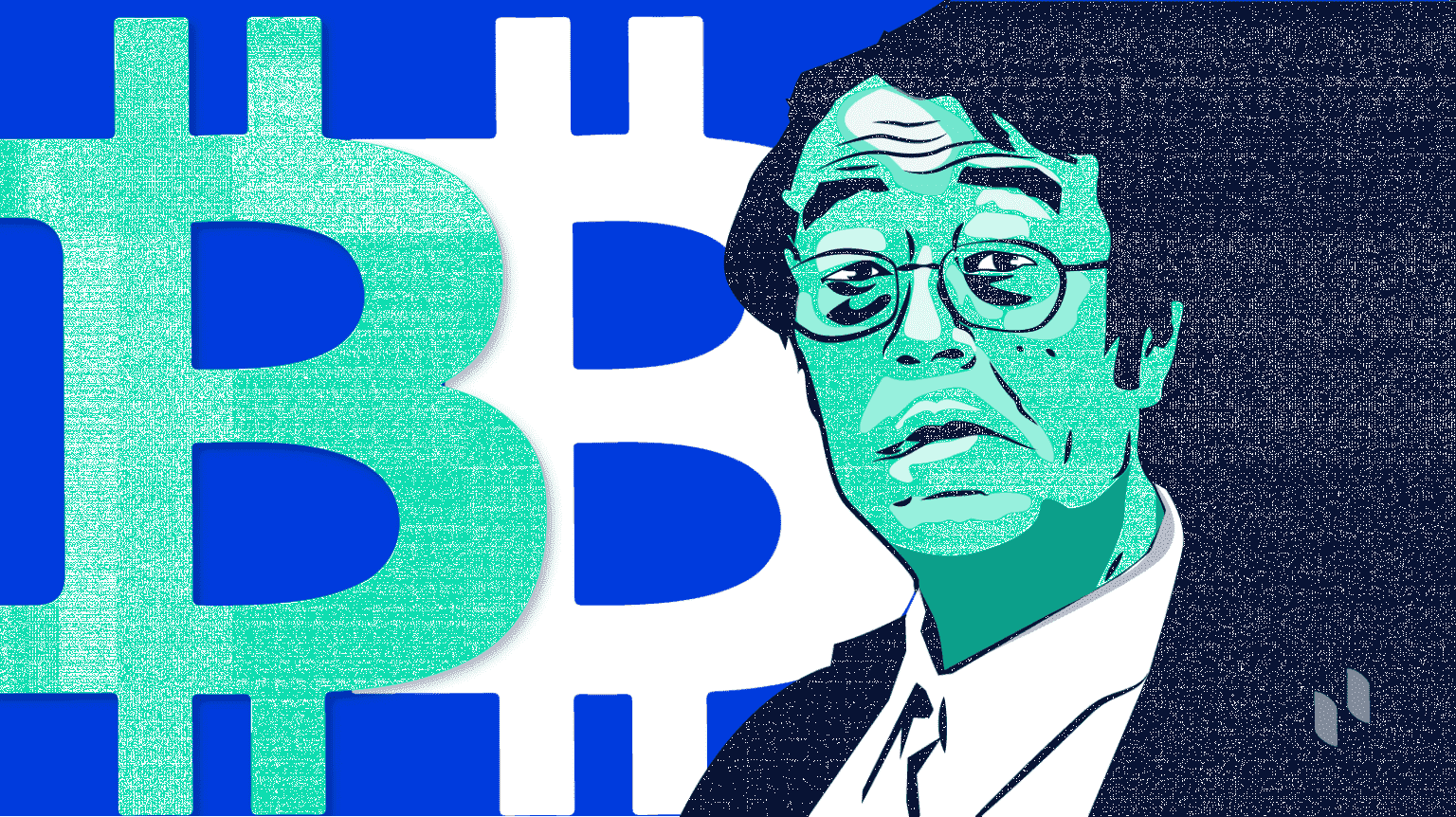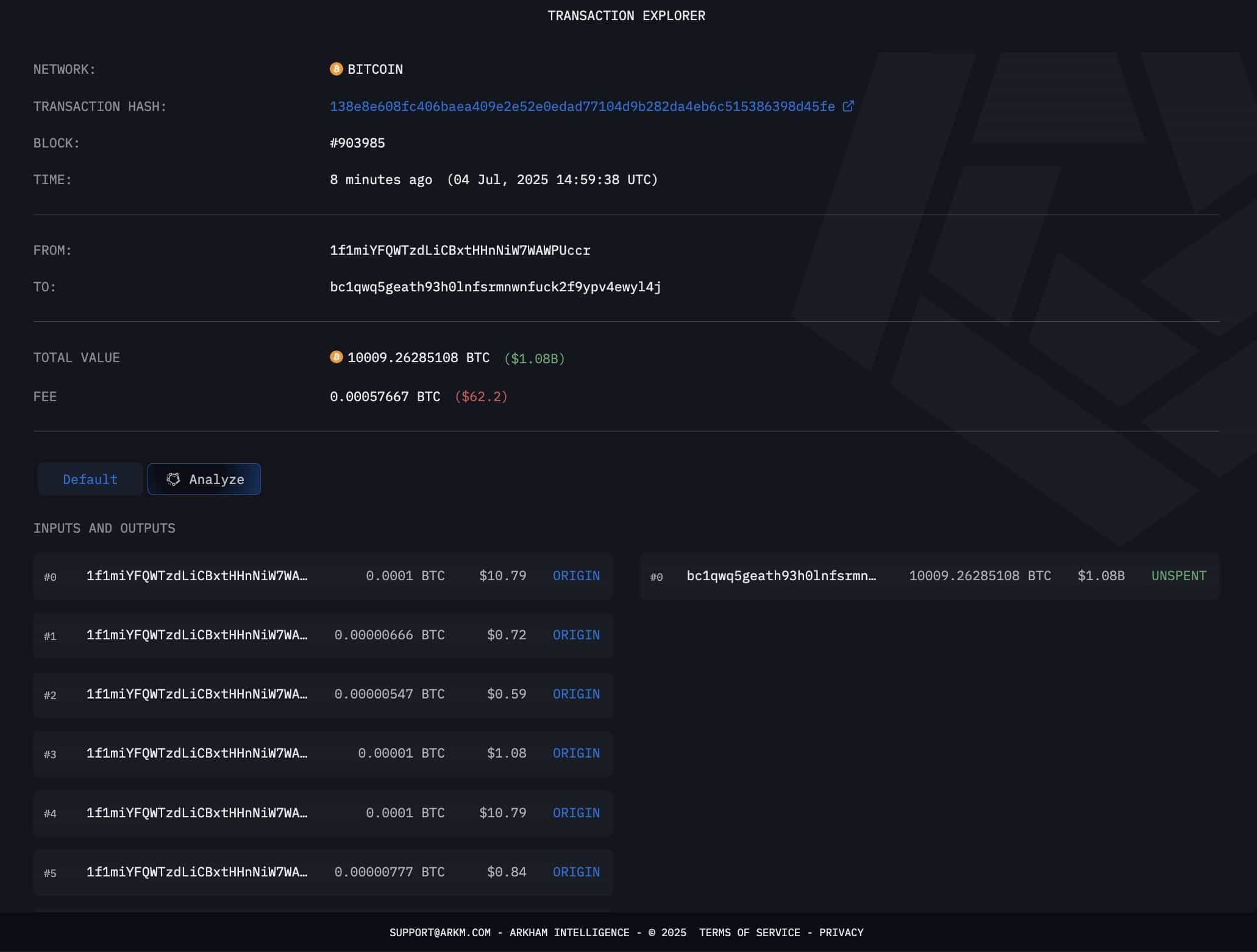The name Satoshi Nakamoto is synonymous with the creation of Bitcoin, the world’s first decentralized cryptocurrency. In July 2025, a mysterious Bitcoin whale moved $8.6 billion in one of the largest daily transfers of old BTC in history, reigniting fascination with Nakamoto’s identity and legacy. Was this Nakamoto resurfacing, or an early adopter from a "Satoshi-era wallet"? This article dives into who Satoshi Nakamoto is, their groundbreaking contributions, the significance of the recent whale transfer, and why their mystery captivates the crypto world.

Satoshi Nakamoto: The Enigmatic Bitcoin Creator
Satoshi Nakamoto is the pseudonymous figure—or possibly a group—behind Bitcoin. In October 2008, Nakamoto released the Bitcoin whitepaper, "Bitcoin: A Peer-to-Peer Electronic Cash System," proposing a decentralized digital currency free from central control. On January 3, 2009, Nakamoto mined the genesis block, embedding a headline from The Times: "Chancellor on brink of second bailout for banks." This message highlighted Bitcoin’s mission to challenge flawed financial systems.
Nakamoto was active on forums like Bitcointalk and via email until April 2011, when they stated they had “moved on” and disappeared. Despite Bitcoin’s $2.15 trillion market cap in 2025, Nakamoto’s identity remains unknown, fueling endless speculation, according to CoinMarketCap.
Key Facts About Satoshi Nakamoto
-
Pseudonym: Likely not a real name; “Satoshi” and “Nakamoto” suggest a Japanese alias, but their English fluency points to a Western background.
-
Bitcoin Holdings: Estimates suggest Nakamoto mined, and likely owns or possesses, 750,000–1.1 million BTC, worth $81–$118.8 billion at $108,000/BTC in 2025, though these coins remain untouched. Estimates vary due to challenges in attributing early mined wallets to Nakamoto alone.
-
Last Activity: April 2011, via email to developer Gavin Andresen.
-
Impact: Bitcoin’s success sparked a crypto revolution, with over 20,000 cryptocurrencies by 2025.
The $8.6 Billion Bitcoin Whale Transfer: A Satoshi Connection?
On July 4, 2025, a wallet dormant since 2011 transferred 80,000 BTC, valued at $8.6 billion, in what analysts call the largest daily movement of old BTC ever, as reported by BitcoinEthereumNews. Originating from a “Satoshi-era wallet” (active 2009–2011), the transfer caused a 1.42% price dip and reignited questions about Nakamoto’s involvement. The $8.6 billion Bitcoin whale transfer in 2025 sparked renewed interest in Satoshi Nakamoto’s legacy. (Arkham)
The $8.6 billion Bitcoin whale transfer in 2025 sparked renewed interest in Satoshi Nakamoto’s legacy. (Arkham)
Details of the Bitcoin Whale Transfer:
-
Scale: 80,000 BTC, valued at $8.6 billion at $108,000/BTC.
-
Source: A wallet inactive for 14 years, likely an early miner or investor.
-
Market Impact: Triggered brief volatility, with Bitcoin stabilizing within hours.
-
Speculation: Theories range from Nakamoto to early adopters like Roger Ver or an institutional player cashing out.
Blockchain data suggests Nakamoto’s involvement is unlikely, as their known wallets have shown no activity since 2011, according to CryptoNews. The transfer likely reflects a dormant whale leveraging Bitcoin’s high value, but it underscores Nakamoto’s enduring influence—large BTC moves consistently spark “Satoshi” speculation.
Satoshi Nakamoto in 2025: Why the Mystery Persists
Nakamoto’s vision for a decentralized, censorship-resistant currency remains vital in 2025. Their impact includes:
-
Financial Inclusion: Bitcoin empowers users in regions with unstable currencies, bypassing traditional banks.
-
Blockchain Innovation: Nakamoto’s proof-of-work model inspired blockchain applications in DeFi, NFTs, and supply chains.
-
Market Dominance: Bitcoin holds a 64.64% market share, cementing its “digital gold” status, per CoinMarketCap.
-
Cultural Fascination: Nakamoto’s anonymity drives media coverage and public curiosity, amplified by events like the $8.6 billion transfer.
Timeline of Satoshi Nakamoto’s Contributions
-
Oct 2008: Publishes Bitcoin whitepaper.
-
Jan 2009: Mines genesis block, launches Bitcoin network.
-
2009–2010: Collaborates with developers like Hal Finney.
-
Apr 2011: Disappears after handing Bitcoin to the community.
-
2025: Remains a crypto icon amid whale transfer speculation.
What Is a Satoshi? The Smallest Bitcoin Unit Explained
A Satoshi is the smallest unit of Bitcoin, where 1 Satoshi equals 0.00000001 BTC. As Bitcoin’s price exceeds $108,000 in 2025, Satoshis enable microtransactions, making BTC practical for everyday use.
Satoshi to BTC Conversion Table
|
Satoshis |
BTC |
Approx. USD (at $108,000/BTC) |
|---|---|---|
|
1 Satoshi |
0.00000001 |
$0.00108 |
|
10,000 Satoshis |
0.0001 |
$0.0108 |
|
1,000,000 Satoshis |
0.01 |
$1.08 |
Satoshis enhance Bitcoin’s accessibility, allowing users to buy fractions of a coin on exchanges like Phemex.
Decoding the Bitcoin Whitepaper: Nakamoto’s Technical Breakthrough
Nakamoto’s 2008 Bitcoin whitepaper solved the double-spending problem—ensuring digital currency isn’t spent twice—without intermediaries. Key concepts include:
-
Blockchain: A tamper-proof ledger of transactions, time-stamped and linked via cryptographic hashes.
-
Proof-of-Work (PoW): Miners solve computational puzzles to validate transactions, securing the network.
-
Decentralization: Nodes maintain consensus, eliminating central control.
-
Incentives: Miners earn BTC rewards, aligning economic motives with network security.
These innovations enabled Bitcoin’s trustless system, influencing projects like Ethereum and Cardano. For a deeper dive, read the whitepaper at bitcoin.org.
Who Could Satoshi Nakamoto Be? Identity Theories in 2025
Nakamoto’s identity remains crypto’s biggest mystery. Recent and historical theories include:
-
Hal Finney: A cryptographer who received the first BTC transaction from Nakamoto. He denied being Nakamoto before his death in 2014, per CoinDesk.
-
Dorian Nakamoto: A Japanese-American engineer named in a 2014 Newsweek article. He denied involvement, and the claim was debunked.
-
Craig Wright: An Australian who claimed to be Nakamoto in 2016 but failed to provide proof, losing credibility.
-
Peter Todd: A 2024 HBO documentary suggested Todd, a Bitcoin developer, as Nakamoto, but he denied it, according to New Yorker.
-
Arthur Britto: A July 2025 Forbes article speculated Britto, a Ripple co-founder, could be Nakamoto, citing his cryptography expertise, but no evidence supports this.
-
Group Theory: Nakamoto may be a team, combining skills in cryptography, economics, and coding.
Nakamoto’s anonymity likely protects Bitcoin’s decentralized ethos, as a revealed identity could invite regulatory scrutiny.
Bitcoin’s Influence on Cryptocurrency in 2025
Nakamoto’s open-source code sparked a crypto revolution. Ethereum (2015) introduced smart contracts, while Solana and Cardano advanced scalability. Bitcoin remains the market leader, with a 64.64% dominance in 2025, per CoinMarketCap. Its principles—decentralization, transparency, security—underpin the $3.3 trillion crypto market.
Satoshi-Era Wallets: What Are They?
Satoshi-era wallets are Bitcoin addresses active between 2009 and 2011, often holding large BTC amounts from early mining. Many are lost due to forgotten keys, making active ones—like the $8.6 billion transfer wallet—rare and newsworthy. These wallets highlight Bitcoin’s early scarcity and enduring value.
Trade Bitcoin on Phemex: Join the Crypto Revolution
Inspired by Nakamoto’s vision? Trade Bitcoin on Phemex—a powerful platform offering industry-leading security, lightning-fast execution, and low trading fees. Steps:
- Sign Up: Create a free account at Phemex.
- Deposit Funds: Easily deposit BTC, USDT, or fiat via secure methods.
- Trade BTC: Trade Bitcoin and 520+ cryptocurrencies on spot, futures, or options markets to maximize returns.
Start trading today and join millions of users on Phemex!
FAQ: Satoshi Nakamoto and Bitcoin in 2025
Who Is Satoshi Nakamoto?
Satoshi Nakamoto is the pseudonymous creator of Bitcoin, who published the Bitcoin whitepaper in 2008 and disappeared in 2011.
Is Satoshi Nakamoto Still Alive?
No evidence confirms whether Nakamoto is alive, as their last communication was in 2011 and their Bitcoin holdings remain untouched.
Why Did Satoshi Nakamoto Disappear?
Nakamoto likely disappeared in 2011 to protect Bitcoin’s decentralization and avoid regulatory scrutiny, though their exact reasons remain unknown.
Is Satoshi Nakamoto a Real Person or a Group?
Nakamoto’s identity is unknown; they could be an individual or a group combining expertise in cryptography and economics.
Did Satoshi Nakamoto Move $8.6 Billion in Bitcoin?
Blockchain data suggests it’s unlikely, as Nakamoto’s known wallets have shown no activity since 2011, per CryptoNews.
How Much Bitcoin does Satoshi Nakamoto Have?
If Nakamoto holds 1 million BTC, their net worth could exceed $108 billion in 2025.
What Is a Satoshi Unit?
A Satoshi is 0.00000001 BTC, used for microtransactions as Bitcoin’s price rises.
What Is a Satoshi-Era Wallet?
Wallets active from 2009–2011, often holding early-mined BTC, like the one in the $8.6 billion transfer.
What Is the Bitcoin Whitepaper?
Nakamoto’s 2008 paper outlining Bitcoin’s decentralized system, available at bitcoin.org.
Conclusion
Satoshi Nakamoto’s legacy as Bitcoin’s creator endures, with the $8.6 billion whale transfer in July 2025 reigniting fascination. Their vision for a decentralized financial system has reshaped technology and finance, with Bitcoin leading a $3.3 trillion crypto market. At Phemex, we empower users to engage with this ecosystem through secure trading and expert resources. Join Phemex today to explore Bitcoin’s potential!
Disclaimer: The information presented in this article is for educational and informational purposes only. It does not constitute investment advice, financial advice, trading advice, or any other form of advice, and you should not treat any of the article's content as such. Phemex does not recommend that any specific cryptocurrency should be bought, sold, or held by you. The cryptocurrency market is subject to high market risk and volatility. Past performance is not indicative of future results. All investment strategies and investments involve risk of loss. You should conduct your own due diligence and consult a qualified financial advisor before making any investment decisions. Phemex is not responsible for any investment decisions you make based on the information provided in this article.








